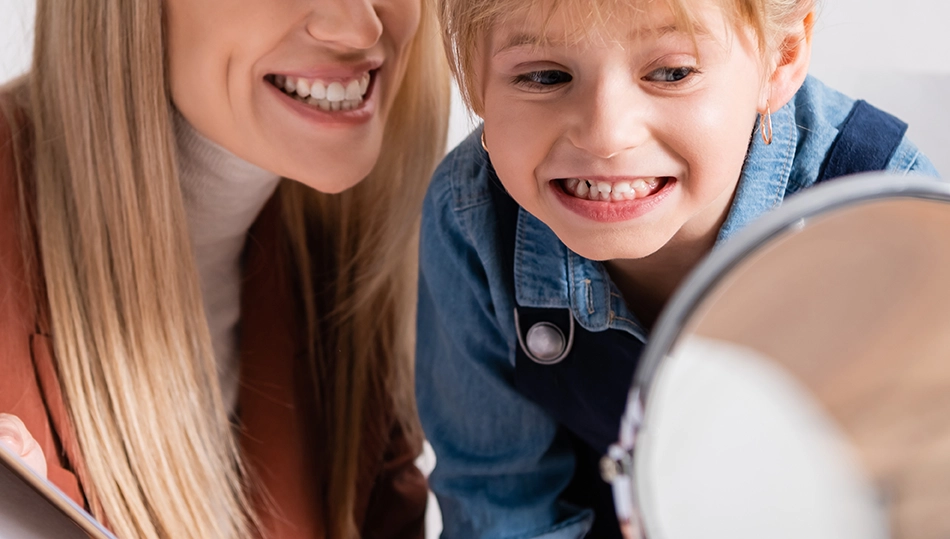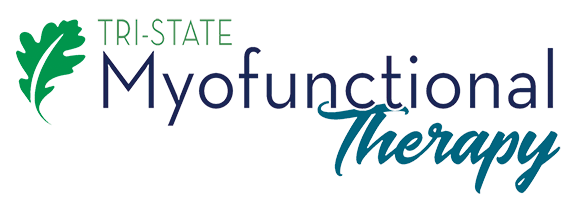Many people can feel better and smile brighter naturally without painful procedures or expensive surgeries through Orofacial Myofunctional Therapy.
The appearance of one’s face can become affected by incorrect breathing habits. In fact, studies show that more than half of children under the age of nine may engage in mouth breathing at some point. Factors contributing to mouth breathing include habits like thumb-sucking and pacifier use, as well as medical issues such as allergies, enlarged tonsils or adenoids. See:
- Green City Dental: Is Your Child a Mouth Breather? How to Tell, Why to Worry, & What To Do
- Utah Pediatric Dentists: What’s So Bad About Mouth Breathing in Children
If a child has a habit of breathing through their mouth, or their lips rest apart, this leads to dysfunctional muscle patterns that affect the way the face grows and the muscles wind up not working together as a team. Some muscles become strained, some become weak. This can greatly affect the appearance of one’s face as a child and then adult.
%
Prevalence of mouth breathing in elementary children

Thankfully, all of these issues may be addressed naturally through Orofacial Myofunctional Therapy (OMT). Big word, but let’s break it down. “Orofacial” relates to the mouth and face. “Myofunctional” is concerned with muscle function. So OMT is therapy that assists with retraining the muscles of the mouth and face to work correctly. Correct function means muscles are working together in a balanced and effective way.
When the muscles of the mouth and face don’t work correctly, we consider to be an Orofacial Myofunctional Disorder (OMD). Such disorders may lead to symptoms such as snoring, sleep apnea, headaches and TMJ, orthodontic problems, and an unattractive appearance.
When the muscles of the mouth and face work properly and together as a balanced team, however, this can help guide growth of an attractive appearance and smile for children.
OMDs may include lips resting apart or pressed together with tension, mouth breathing day and/or night, tongue resting low or against the teeth, and improper swallowing patterns. Myo therapy can addresses these OMDs and, therefore, enhance one’s appearance.
The tongue is the cornerstone.
The tongue is very important and often overlooked when it comes to someone’s appearance. In some people, the tongue lays down at rest or puts pressure in the mouth incorrectly with the swallow. This leads to facial features that are not as attractive as someone who has had their tongue resting on the roof of the mouth and swallowing correctly since the beginning of life. If the tongue is not working correctly because of low tone, habits, or a tongue tie, Myofunctional Therapy should be considered.
Muscles affect the way the face grows
We know that muscles affect the way bones grow. If muscles are gently pulling on bone with proper function, they guide bone growth. However, if muscles aren’t working, or are weak, it keeps bones from growing optimally. Then when a person breathes through their mouth, the facial muscles don’t work right and the person could develop a long, narrow face and small airways. With proper nasal breathing day and night, a jaw can become squarer, along with more prominent cheek bones, more room for the airway, and a healthy, wide and balanced smile.
Less Oxygen
“Without sufficient oxygen, skin is unable to maintain its natural vitality, possibly leading to fine lines and wrinkles, and a dull, tired and depleted appearance. Well-oxygenated skin appears firmer, revitalized and more plump!” (dermatologica.com)
Those who breath through their mouth absorb less oxygen into their blood stream and muscles. It’s likely that sleep is impacted negatively. Obstructed airways may also lead to a drained-looking appearance. Facial muscles, and thus facial expressions, wind up being low-toned, tired and weak.
Starting Myofunctional therapy as a young child teaches the facial muscles how to work correctly early on, thus helping to guide the growth of the cranial facial structure and teach correct breathing.
Myofunctional Therapy Exercises
Myofunctional Therapists prescribe specific exercises to form new habits and train proper function. Myo Exercises will build the smiling muscles, lip muscles. It generally encourages all muscles of mouth and face to work correctly and independently of each other so they are strong enough for facial function and expression. The smiling muscles are accentuated and balanced.
For adults, even though the bony structure of the skull has already been formed, the soft tissue of the muscles can still have great restoration. With all the muscles of the mouth and face working together in a balanced and collaborative effort, the facial appearance and smile is lifted, enhanced, and eyes brightened.
Conclusion – First, Natural Solutions Through Myofunctional Therapy
Before investing in extensive and expensive cosmetic procedures, wouldn’t it make sense to first try a natural and affordable solution? See what your natural appearance is like after OMT when every muscle of the mouth and face is toned, strengthened, maintained and working as it should. You may even notice reduction of symptoms for problems you didn’t believe could be solved, such as clenching and grinding of teeth, headaches, stomach problems, sleep issues, neck tension and more!

